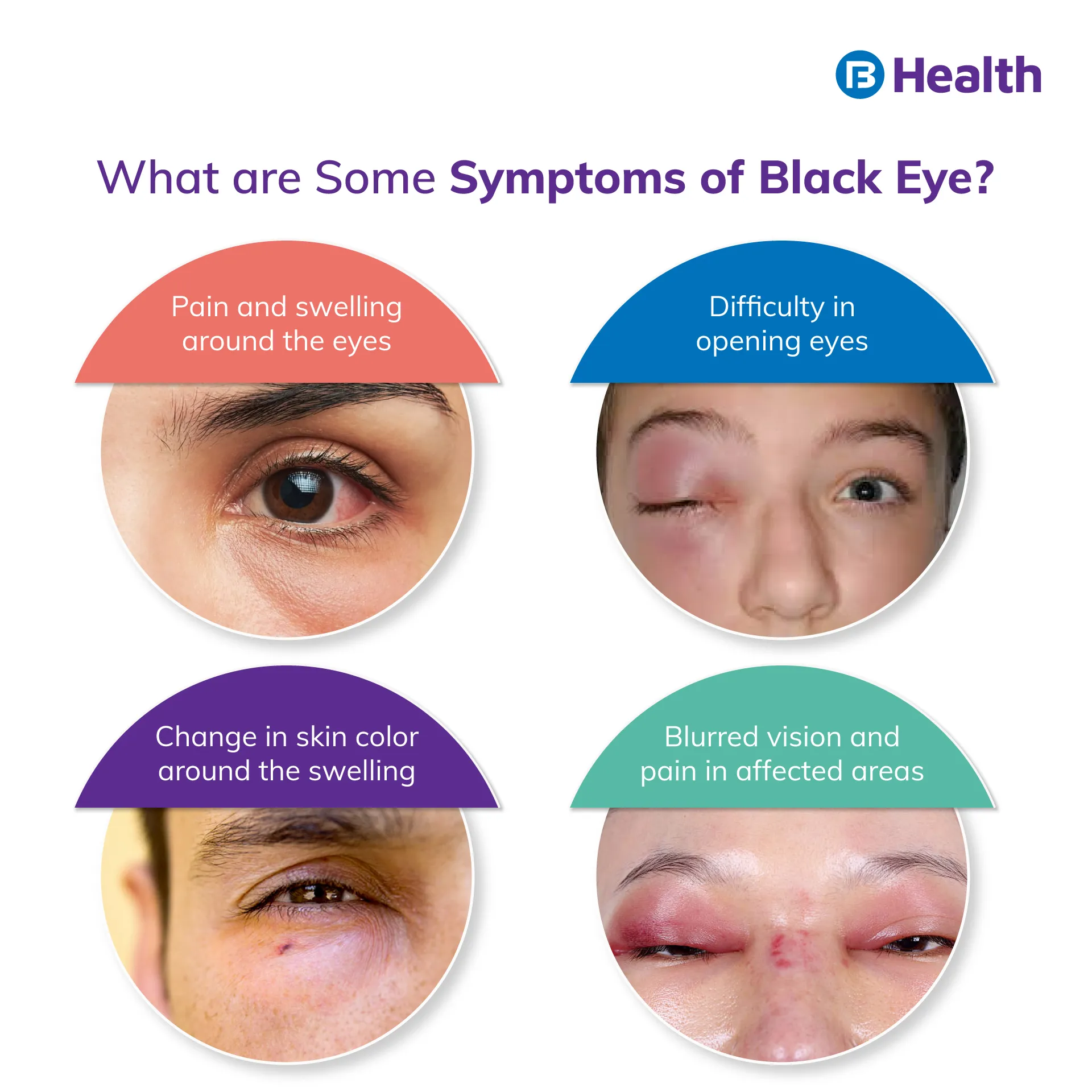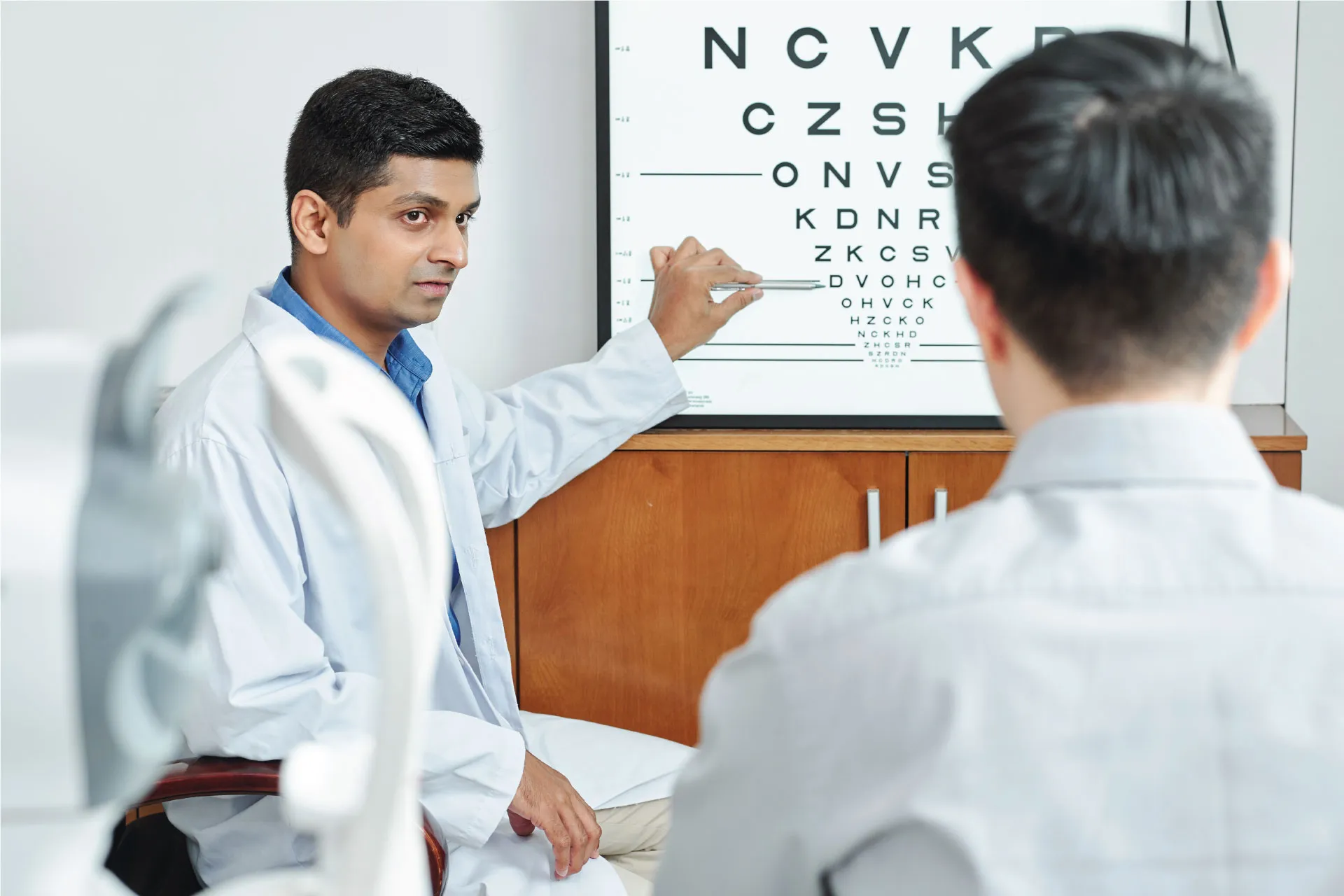Eye Health | 4 min read
Black Eye: Meaning, Early Signs, Complications, Treatment
Medically reviewed by
Table of Content
Synopsis
Black eye or periorbital hematoma is a medical condition in which the region under the eye turns into a bluish-dark colour due to tissue bruising. The condition is not serious, and you need to receive medical attention only if the pain is severe.
Key Takeaways
- A black eye is caused by bruising of skin tissues around the eye
- Black eye usually disappears within a week or two
- A black eye could also be a warning sign for a serious medical condition
A black eye is a medical condition in which the region under the eye turns into a bluish-dark colour. It happens because of a burst or leakage of blood vessels under the skin or results from bruising of tissue around the eye. In some cases, a black eye is caused due to surgical procedures.
The medical name for a black eye is a periorbital hematoma, and another name is shiner. The bruising, swelling, and puffiness may temporarily blur vision. However, this health condition is not serious. If the pain is severe and you experience any bleeding inside the eye, get medical attention as soon as possible.
Causes of Black Eye
- In most cases, the results from accidents and fighting. Violent assaults cause around 15% of all eye injuries. [1] Here are a few other causes: If something powerful strikes a person's face, like a ball in a competitive sport or a door
- Surgeries like dental, nose surgery, or a facelift
- Domestic abuse is also a reason. Hence, the doctor may ask a few questions while diagnosing to ensure you are in a safer environment
- A skull fracture results in bruising in both the eyes
- Infections similar to sinus lead to this
- People with allergies may also experience this health condition

Symptoms of Black Eye
Here are a few symptoms that will alert you about this health condition beforehand:
- Pain around the eyes
- Swelling around the eyes
- Change in skin colour as the swelling progresses. At first, it will be red, and then it changes to dark blue, deep violet, and black
- Difficulty in opening your eye
- Blurred vision and pain in affected areas
These are a few symptoms that indicate a serious health condition:
- Severe headache and loss of consciousness
- Blood from ears or nose
- Difficulty in eyeball movement
- Blood on the surface of the eye
Normally the symptoms of a black eye disappear within 1-2 weeks. However, it is also advised to visit the doctor as a precaution.
Additional read: Conjunctivitis Causes
Black Eye Treatment and Home Remedies
People usually use cold and warm treatments as a relief measure from a black eye. The swelling and discomfort around the eyes reduce with a cold compress. On the first day, the person should apply the cold compress for 15 minutes every hour; on the second day, it can be reduced to five times. However, here are a few precautions while applying ice packs:
- Don't press the ice pack too hard in the affected areas
- Don't apply ice directly on the skin
- Wrap the ice pack in a cloth before use
From the third day, the person may start using a warm compress. It promotes the reabsorption of blood. Pain relievers such as acetaminophen and ibuprofen help to relieve pain. However, before using any medication, consult a doctor.
Additional read: Night Blindness SymptomsDiagnosis of Black Eye
If you visit the doctor for a black eye treatment, the doctor will try to understand the cause of the black eye. Then, they will perform examinations like testing your eye vision by shining a light into your eyes.
If the doctor suspects any skull fracture or head injury, they will order a CT scan or X-ray and refer you to a neurosurgeon. In the case of a black eye that is caused due to an injury, you should consult an ophthalmologist. To test eyeball abrasions, specialists may use dye.
ENT specialists may be required if the doctor suspects facial fractures or fluid in the ears or nose.
Complications of Black Eye
The black eye is a minor health condition that resolves on its own. However, there are a few complications associated with this condition.
- Loss of vision
- The appearance of eye floaters
- Irregular pupil size called Anisocoria
- The bulging of tissues in front of the eyes is known as keratoconus
Other Eye Problems
Some other common eye problems include:
Lazy eye:
Lazy eye condition, the patient experiences decreased eyesight. The lazy eye is treated via glasses and surgeryStrabismus:
It is also known as the crossed eye disease. It is a condition in which an individual's eyes cannot look in the same direction at the same time
A black eye results from bruising of the skin tissue around the eye and is usually harmless, but it could be a sign of an underlying health condition. If your black eye lasts for more than two weeks, you should get a doctor's opinion. Bajaj Finserv Health offers you an online doctor consultation from the comfort of your home to make this process easier.
References
- https://www.health.harvard.edu/a_to_z/black-eye-a-to-z
Disclaimer
Please note that this article is solely meant for informational purposes and Bajaj Finserv Health Limited (“BFHL”) does not shoulder any responsibility of the views/advice/information expressed/given by the writer/reviewer/originator. This article should not be considered as a substitute for any medical advice, diagnosis or treatment. Always consult with your trusted physician/qualified healthcare professional to evaluate your medical condition. The above article has been reviewed by a qualified doctor and BFHL is not responsible for any damages for any information or services provided by any third party.





